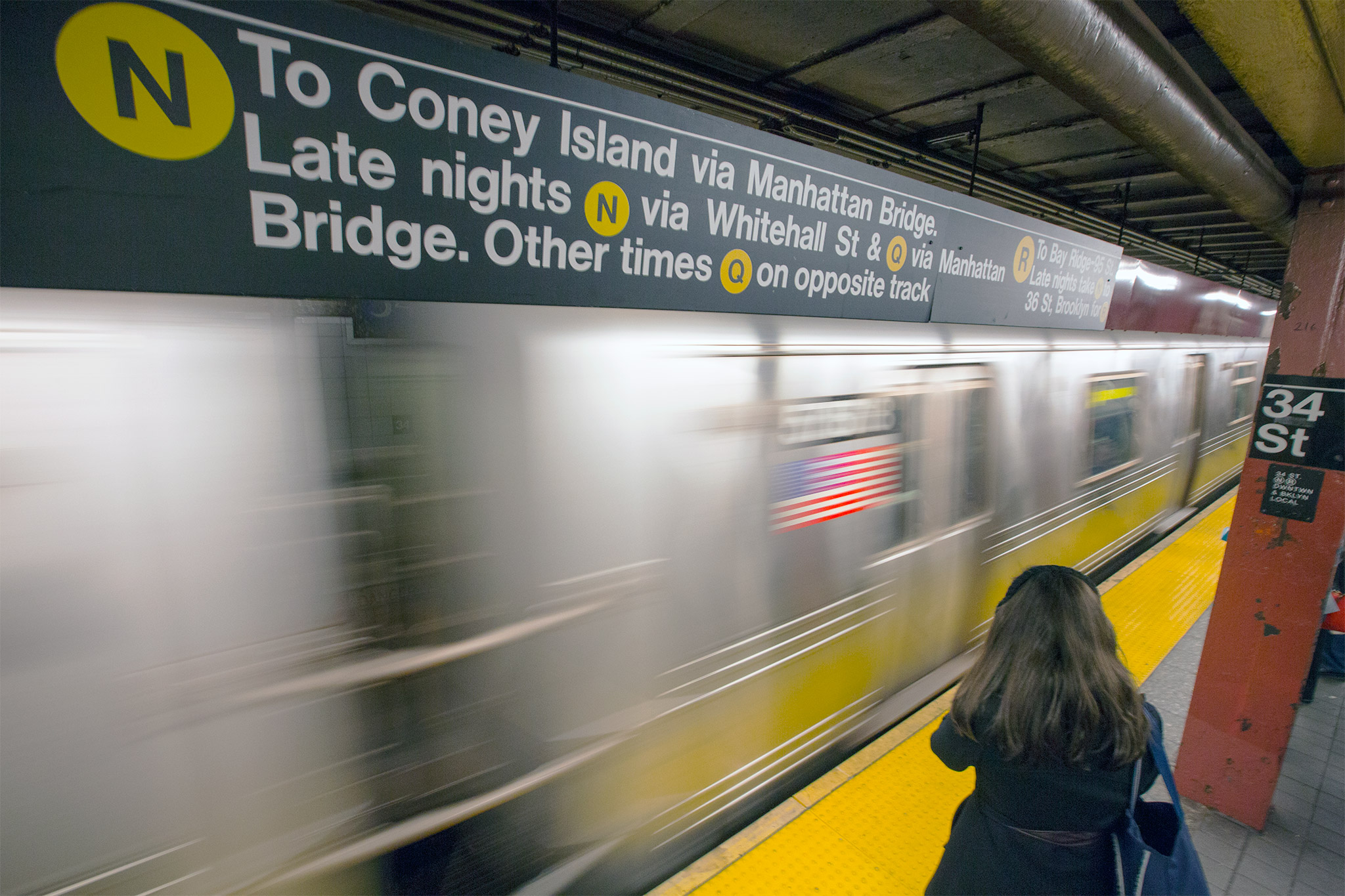SUBWAY

The New York City subway is one of the oldest in the world, it was inaugurated on October 27, 1904 after more than 7,700 people worked on its construction for about 16 years.
It is the fastest way to get around the city and covers four of the five districts (Manhattan, Queens, Brooklyn, Bronx). The Service is operational 24 hours a day, 7 days a week, with some limitations at night.
The ticket
Rates: $2.90 single ride, $34 (7-day) or $132 (30-day).
The easiest way to pay for your ticket is to use your credit card tapping it at OMNY readers. Using this method, you can take advantage of “fare-capping”, a maximum spending limit of $34. Once you reach this limit tap your card (always the same one) without paying anything else for 7 days from the first payment.
Alternatively, you can purchase the Metrocard at a cost of $1 and its validity, marked at the top left of the back, is about a year. At this point the card can be loaded with a subscription, 7 or 30 days, or with a fund that will be used to pay for individual trips.
Once inside the subway network you can take all the lines until you exit one station.
The structure
More than 6,400 carriages are used on 24 lines covering a network of 1,059 km (658 miles) and 469 stations. Their entry is indicated by a table indicating the lines that stop you and by some red or green street lamps. Green indicates 24-hour opening, while red indicates some restrictions such as temporary closing at night. Generally, the access is unique for both directions of the trains, with the exception of some stations in Manhattan that do not have a direct connection between the platforms, so before entering you must check the sign to choose the right direction (
Uptown Only or Downtown Only).
Stations and trains
The lines are marked with numbers or letters while the color distinguishes groups of lines that make similar paths, so the green indicates the lines 4, 5, 6 that run through the eastern part of Manhattan and the red 1, 2, 3 that cross the western part. There are two types of trains,
local and
express, the first stopping at all stations while the others skip some. In the four-track stations the express trains pass on the central tracks while the local trains pass on the external ones. To choose the track just check the direction of the train marked on the signs, then uptown to the north of Manhattan (
northbound), downtown to the south (
southbound) and
Brooklyn-bound to Brooklyn. The frequency is one train every 2-5 minutes at peak times, the so-called rush hours, every 10-15 minutes during the day and every 20 minutes between midnight and five in the morning. Contrary to what is said, it is not so dangerous to take the subway but follow some simple safety rules is recommended. At night, it is preferable to stay in the
Off-Hours Waiting Area marked with yellow lines that are near the ticket offices with staff or are video-surveyed.
References
Metropolitan Transportation Authority
Subway Crime Prevention Tips (New York City Police Department)
Riding Safely (Metropolitan Transportation Authority)
Useful links
Maps (Metropolitan Transportation Authority)
Fares & Tolls (Metropolitan Transportation Authority)
Schedules (Metropolitan Transportation Authority)
Records
Subway Map
 The New York City subway is one of the oldest in the world, it was inaugurated on October 27, 1904 after more than 7,700 people worked on its construction for about 16 years.
The New York City subway is one of the oldest in the world, it was inaugurated on October 27, 1904 after more than 7,700 people worked on its construction for about 16 years.